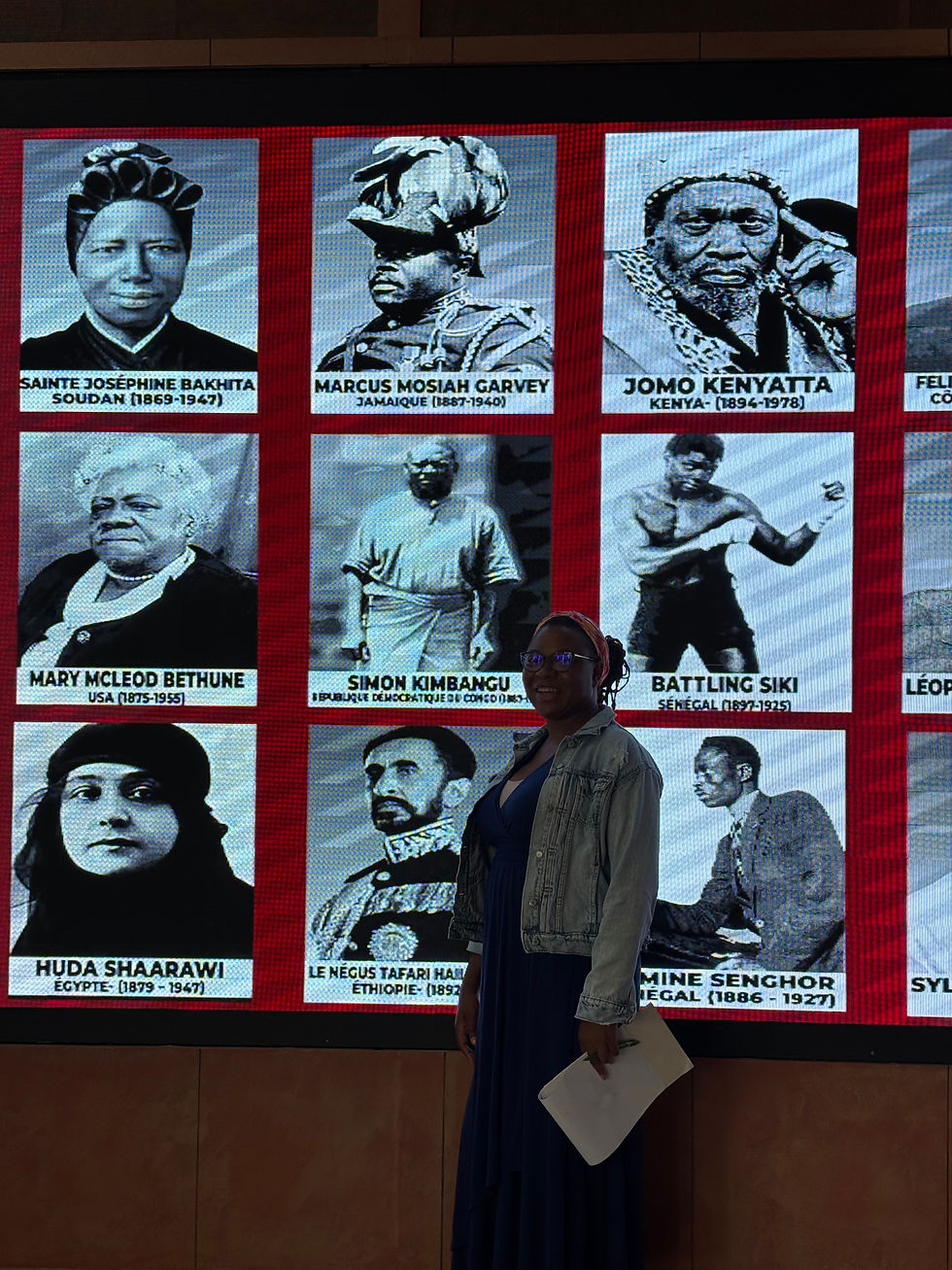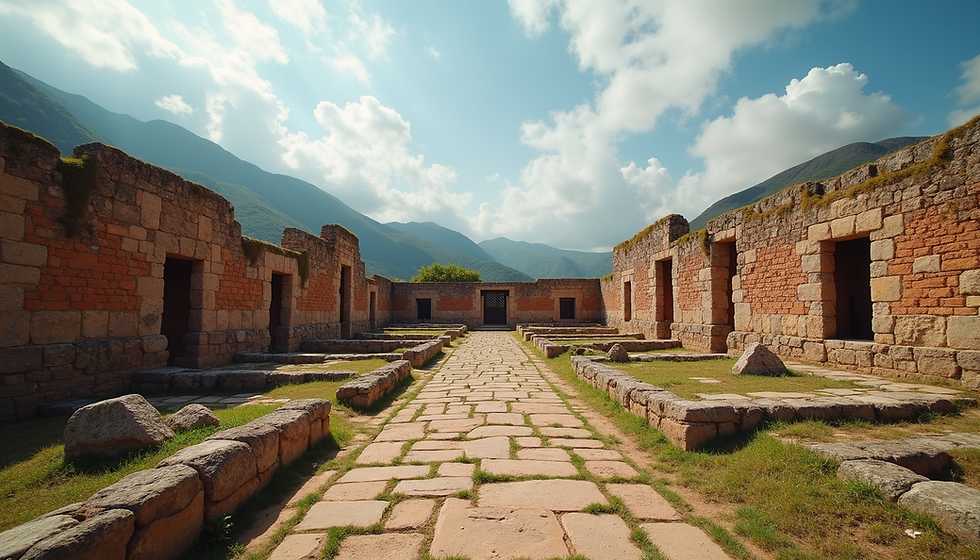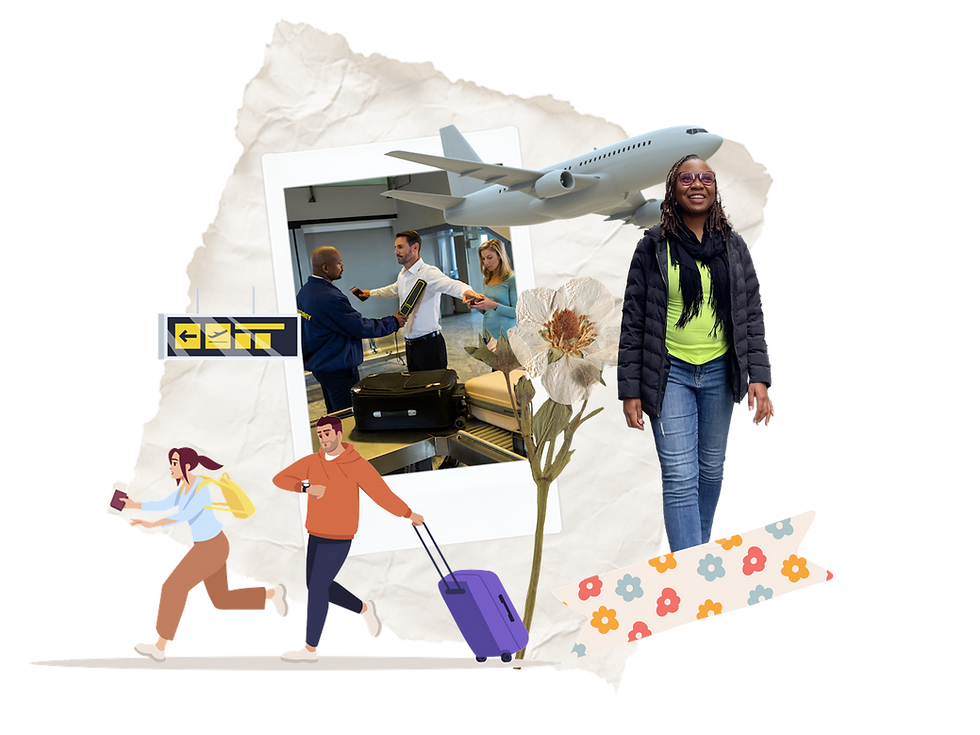Day 3 in Senegal – A Journey Through Colonial Shadows and Diasporic Light
- Joni Roberts
- Jul 17
- 3 min read
Our second full day in Senegal was nothing short of phenomenal—an immersive, challenging, and unforgettable deep dive into history, identity, and survival.
We began with a guided tour of Dakar that revealed the city’s physical and symbolic divides. On one side, remnants of colonial power and architecture; on the other, the neighborhoods that existed in resistance or exclusion from that colonial footprint. The literal split between the “haves” and “have-nots” was both glaring and sobering, rooted in a history of division that still echoes today.
From there, we made our way to the Museum of Black Civilizations—an experience I will carry with me for a lifetime. Walking into the gallery, I was immediately struck by the wall of global Black activists and innovators. Icons from across the diaspora were represented, including Jamaica’s very own Marcus Garvey. That moment alone was powerful: an immediate reminder that Black brilliance is not bound by borders.

The museum is layered—physically and intellectually. Each floor, each room, offers a different lens on Blackness: resistance, creativity, sacrifice, legacy. It was a celebration of contributions and a sobering chronicle of loss, pain, and erasure. Some narratives were front and center; others were conspicuously absent. This became our experiential assignment: to question whose stories were being told, and whose were missing. What is the curator trying to say? What is the political or cultural lens being used? These questions weren’t just academic—they were reflective, urging us to think about how we tell stories in our own work, how we build programs, and how we craft curricula. What are the outcomes we want? What perspective are we privileging?
After this powerful visit, we headed to a scenic oceanside lunch—a much-needed moment of exhale and reflection. But the afternoon was just as engaging. We were broken into small groups, each dropped off in a different area of Dakar and challenged to "survive" the city. We had to navigate by walking, using taxis, and communicating however we could to reach a designated location. It wasn’t just a scavenger hunt—it was a real-life application of adaptability, cultural humility, and engagement. This gave us a glimpse into how students learn when they’re dropped into new environments, and how powerful it is to get beyond the hotel walls to truly understand a place.
We ended the day at a beautiful outdoor Spanish-owned restaurant. The location itself was a final lesson in global footprints—how various groups, from the French to the Chinese to the Spanish, have all carved out visible, tangible spaces in Senegal. We drove through neighborhoods that illustrated these histories: from colonial-era French villas to Chinese-owned business districts. This visual tour of foreign influence and economic entanglement made us reflect deeply on the waves of colonization—and how each one has left its own mark on the land and the people.
Our final discussion brought everything full circle as we engaged with the works of Frantz Fanon. To read his analysis of colonialism is one thing—but to see it reflected in the very architecture, economy, and layout of a city is transformative. Dakar, described as one of the original colonial cities on the African continent, is a living archive of Fanon’s insights. We didn’t just read his words; we walked them.
Day 3 was a journey—not just through the streets of Dakar, but through history, identity, power, and possibility. I end the day both exhausted and inspired, already changed by what I’ve seen and what I’ve learned.




Comments